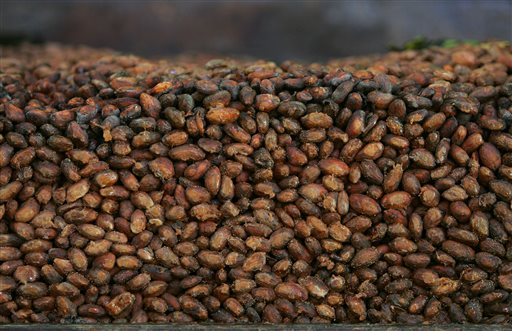In case anyone needed another reason to love chocolate, a new study suggests that a natural compound found in cocoa, tea and some vegetables can reverse age-related memory loss.
The findings suggest that the compound increases connectivity and, subsequently, blood flow in a region of the brain critical to memory, the researchers said.
The study – published online Sunday in Nature Neuroscience and partly financed by a chocolate company – found that flavanols reverse mild memory loss in older adults.
Using brain scans and memory tests, the latest study built on previous work showing that flavanols extracted from cocoa beans had improved neuronal connections in mice’s dentate gyrus, a part of the brain involved in memory formation.
But hold that chocolate bar. The researchers also warn that the compound found in cocoa exists only in minuscule amounts in the average chocolate bar compared with the amount used in the study, so gorging on chocolate in the name of health and improving one’s memory could backfire.
“It would make a lot of people happy, but it would also make them unhealthy,” said Scott Small, a professor of neurology and director of the Alzheimer’s Disease Research Center at the Taub Institute at Columbia University Medical Center.
Small said that even more important, the new study offers the first direct evidence that memory deteriorates with age because of changes in the dentate gyrus, a region of the hippocampus. Previous studies had shown a link between changes in this region of the brain and normal, age-related memory loss, but the Columbia University study asserts a causal link.
“It more firmly establishes that this is the anatomical source of age-related memory loss,” said Small, the study’s senior author. He said the study also offered yet more evidence that diet and healthy lifestyles that increase blood flow to the brain can slow or reverse age-related cognitive decline.
The study involved 37 healthy subjects who ranged in age from 50 to 69. On a random basis, they were given either a high-flavanol diet, consuming 900 milligrams a day, or a low flavanol diet, consuming 10 mg per day. Brain scans, which measure blood volume in the dentate gyrus, and memory tests were used to evaluate the effect of the diet. Small said the typical candy bar contains about 40 mg of flavanols.
Researchers said that if a person had the memory of a typical 60-year-old at the beginning of the study, after three months, on average, that person’s memory would function more like a 30- or 40-year-old’s. The researchers also cautioned that more work is needed because of the study’s small sample size.
Send questions/comments to the editors.



Success. Please wait for the page to reload. If the page does not reload within 5 seconds, please refresh the page.
Enter your email and password to access comments.
Hi, to comment on stories you must . This profile is in addition to your subscription and website login.
Already have a commenting profile? .
Invalid username/password.
Please check your email to confirm and complete your registration.
Only subscribers are eligible to post comments. Please subscribe or login first for digital access. Here’s why.
Use the form below to reset your password. When you've submitted your account email, we will send an email with a reset code.